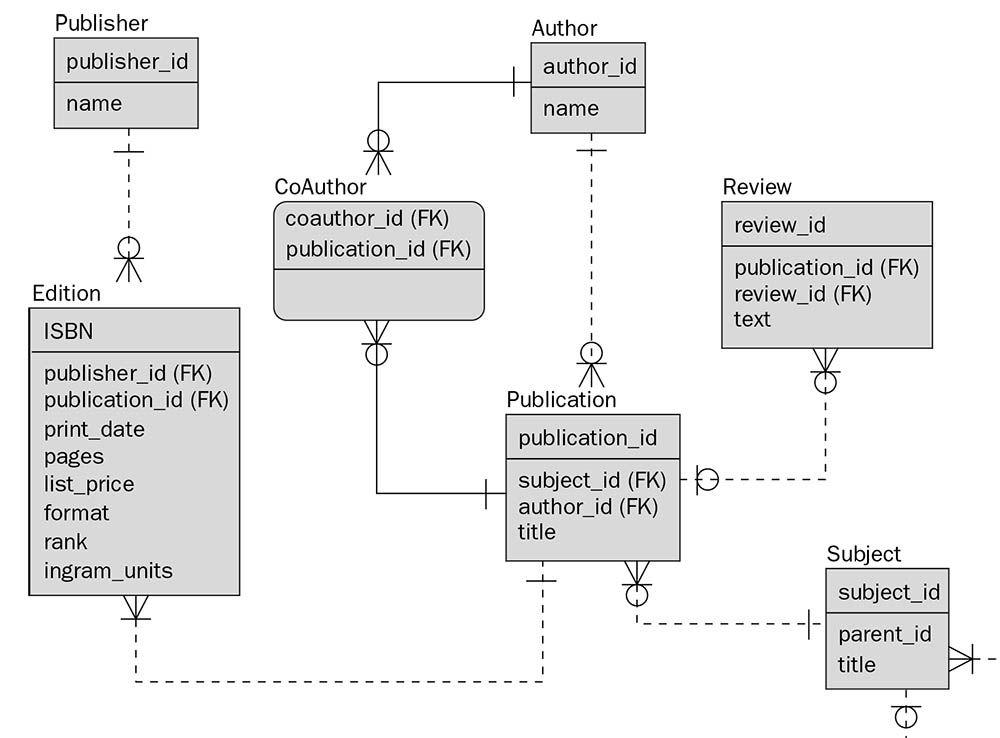Lesson 9
Entity-relationship Diagrams Conclusion
In this module, you learned that there are several ER-diagram models, but they are all read in the same way. You also identified the various elements comprising the Crowsfoot model of an ER diagram. Best of all, you completed the project for this course, creating an ER diagram for Stories on CD, Inc.
Learning Objectives
Having completed this module, you should be able to:- Define the function of an entity-relationship (ER) diagram
- Describe the types of entity-relationship (ER) diagrams
- Identify conventions for diagramming entities and attributes
- Identify the constructs for diagramming types of relationships
- Identify the symbols for diagramming types of participation
- Revise an ER diagram based on a final review with users
- Describe how to verbalize an ER diagram
Representing Relationships in an ERD
Tables can have various types of relationships between them. The different types of inter-table relationships that can be formed between different tables can be best described as displayed in Entity Relationship Diagrams (ERDs). An ERD displays tables and relationships between those tables. Figure 7-9 shows an example ERD for tables in a schema containing published books. Figure 7-9 shows what an ERD is and what it looks like. There is nothing complicated or enigmatic about an ERD. A table is often referred to as an entity in an entity relationship diagram.

Glossary terms
This module introduced you to the following terms:
- Chen model: One of several types of entity-relationship ER diagrams. The Chen model is named after the inventor of ER diagramming.
- Crowsfoot model: One of several types of entity-relationship (ER) diagrams, the Crowsfoot model neatly packages entities with their attributes by placing them in boxes. Also referred to as the Information Engineering model.
- entity-relationship (ER) diagram: A diagram used during the design phase of database development to illustrate the organization of and relationships between data during database design.
- IDEF1X model: One of several types of entity-relationship (ER) diagrams. .Information Engineering (Crowsfoot) model - One of several types of entity-relationship (ER) diagrams; usually referred to as the "Crowsfoot" model.
- Crowsfoot model: One of several types of entity-relationship (ER) diagrams, the Crowsfoot model neatly packages entities with their attributes by placing them in boxes. Also referred to as the Information Engineering model.
- SQL: SQL is an acronym for Structured Query Language. It provides a set of commands that can be used to add data to a database, retrieve that data, and update it. SQL, often pronounced “sequel”, is universally supported by relational database vendors.
Database Modeling